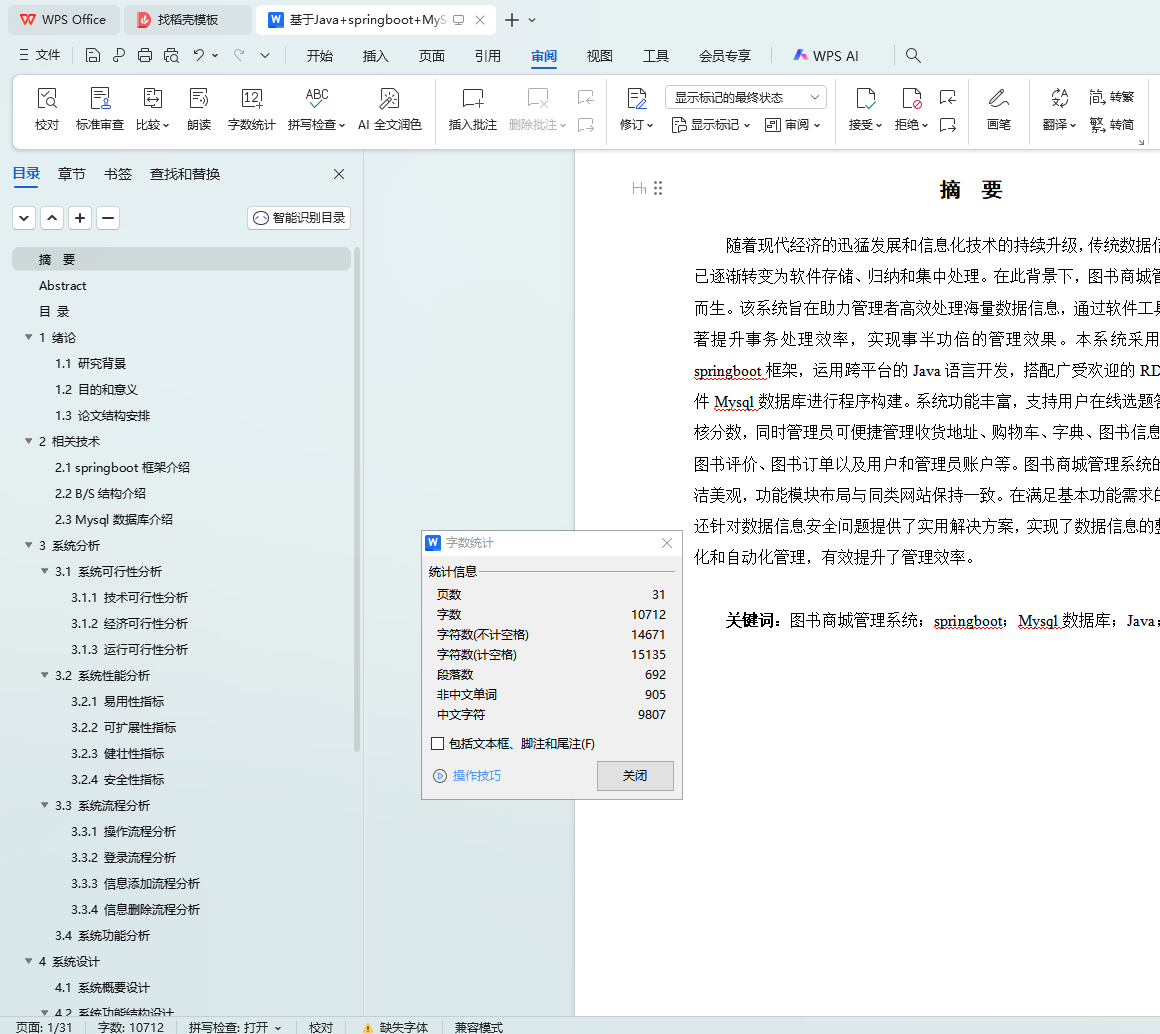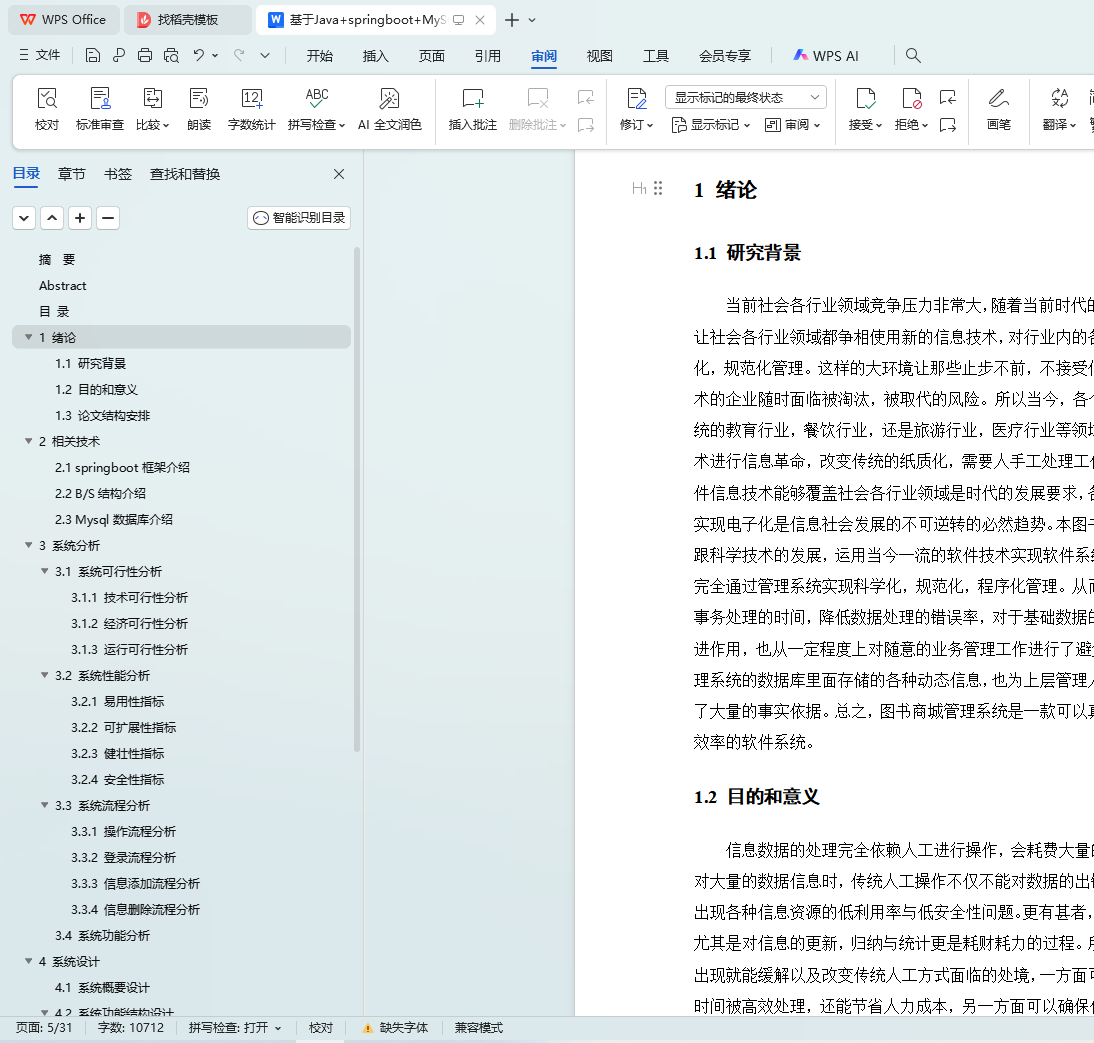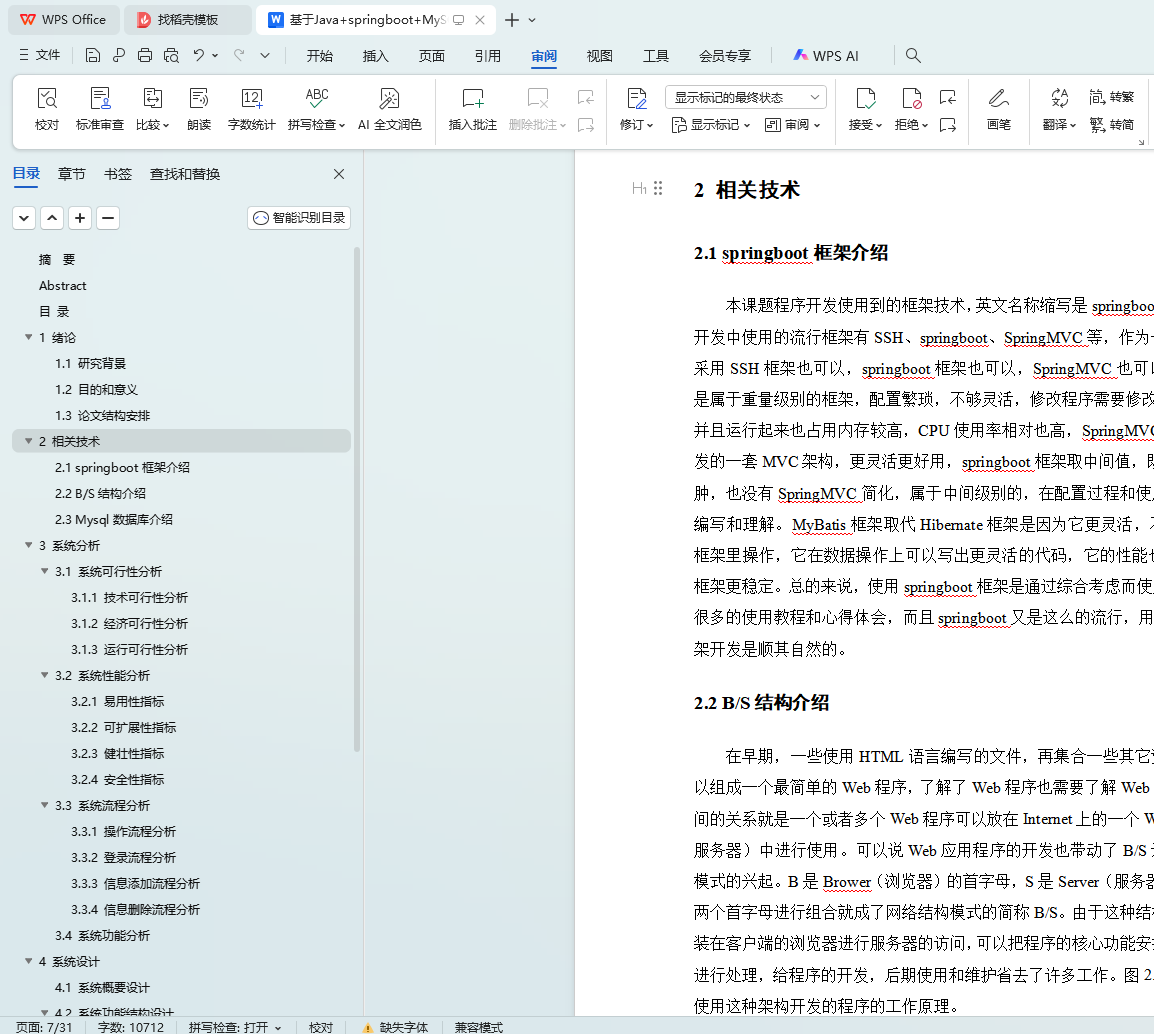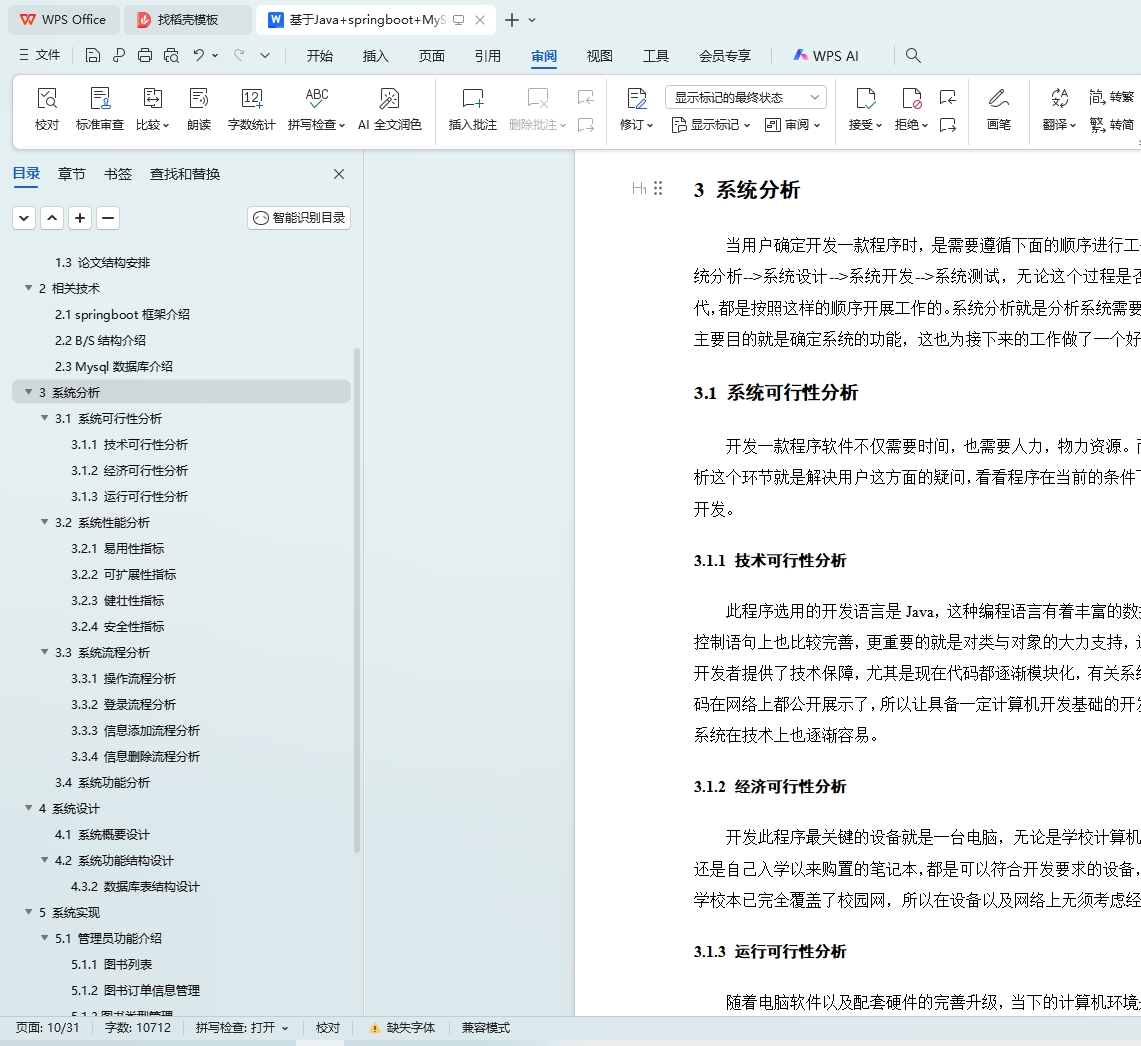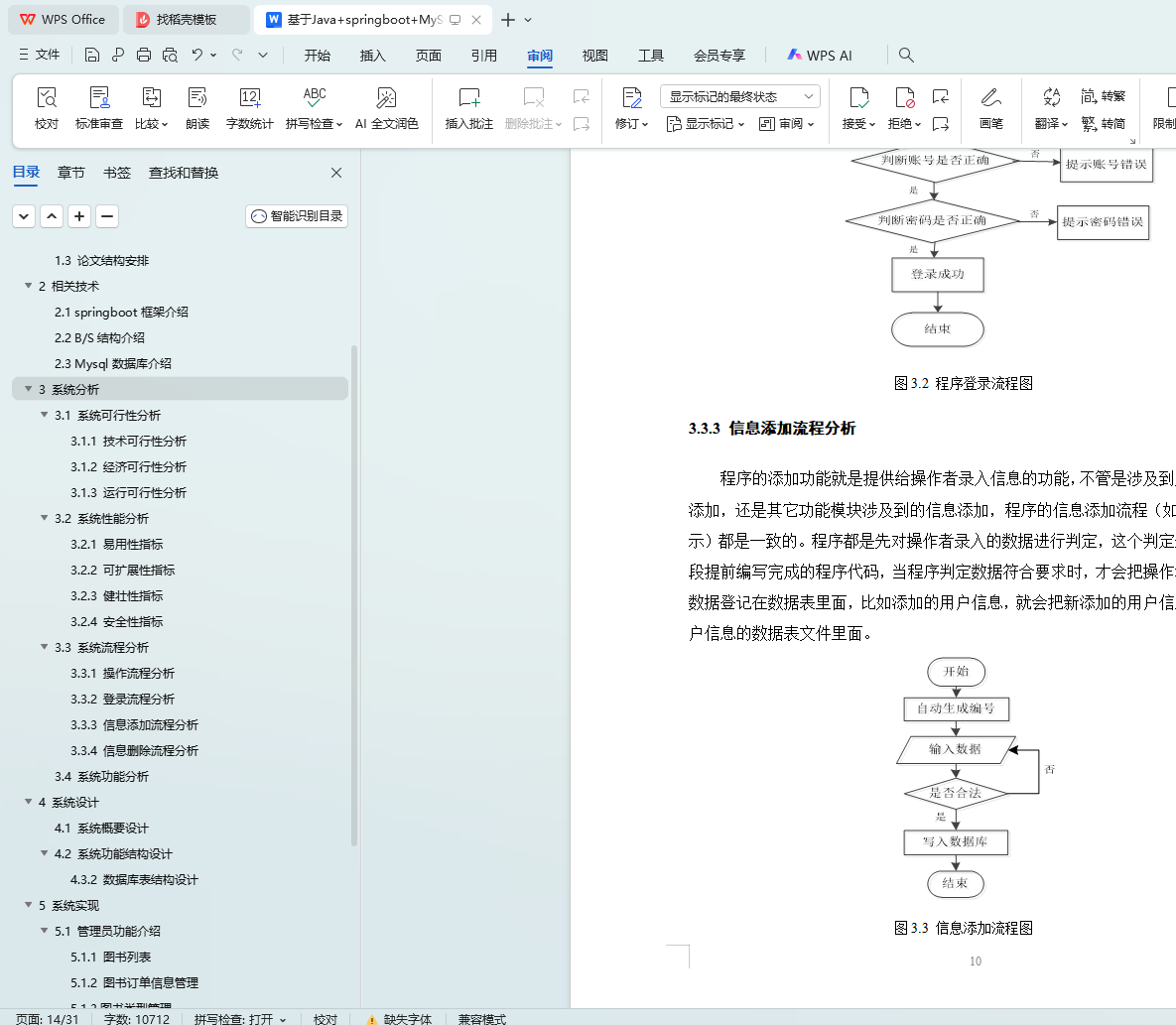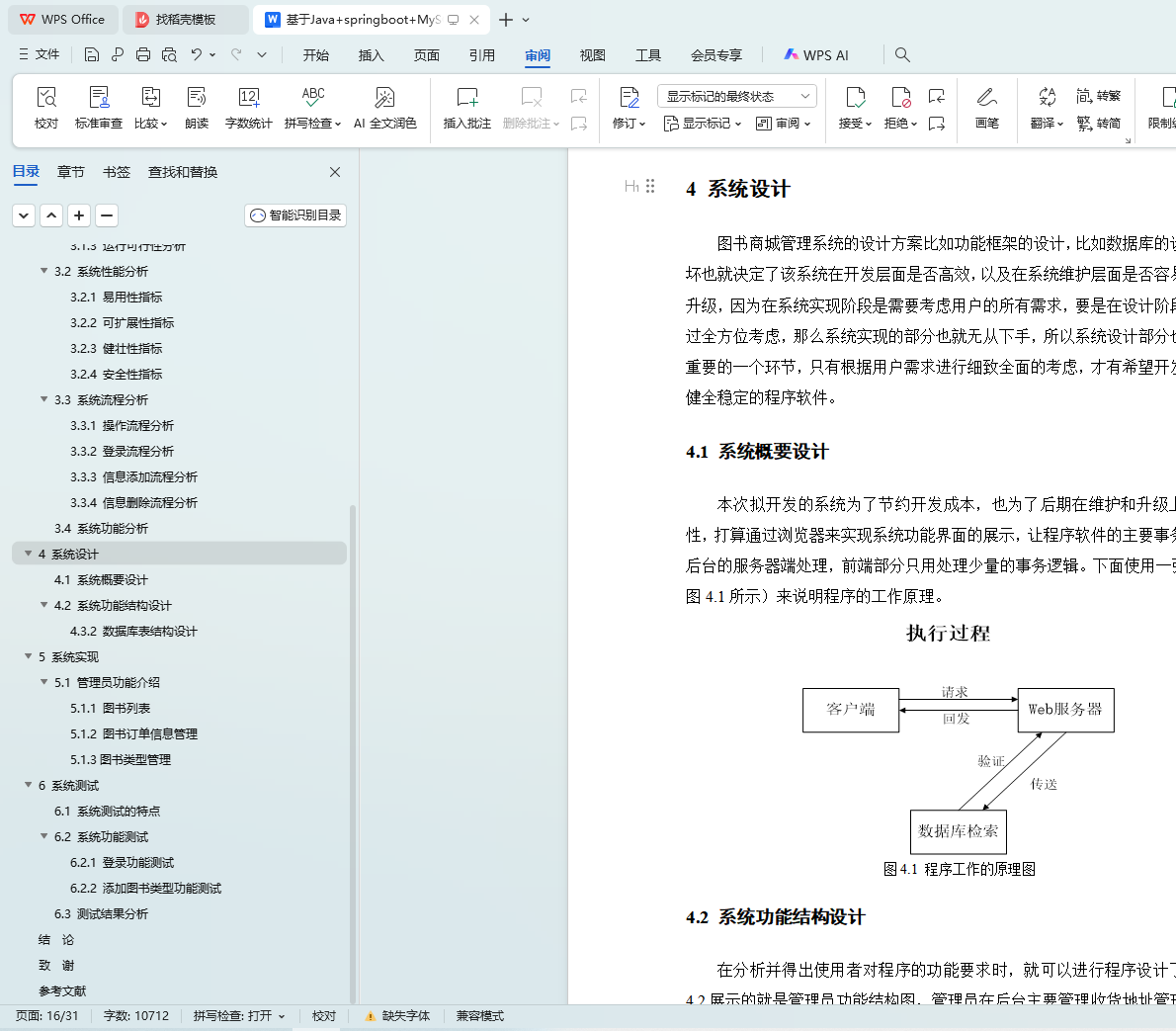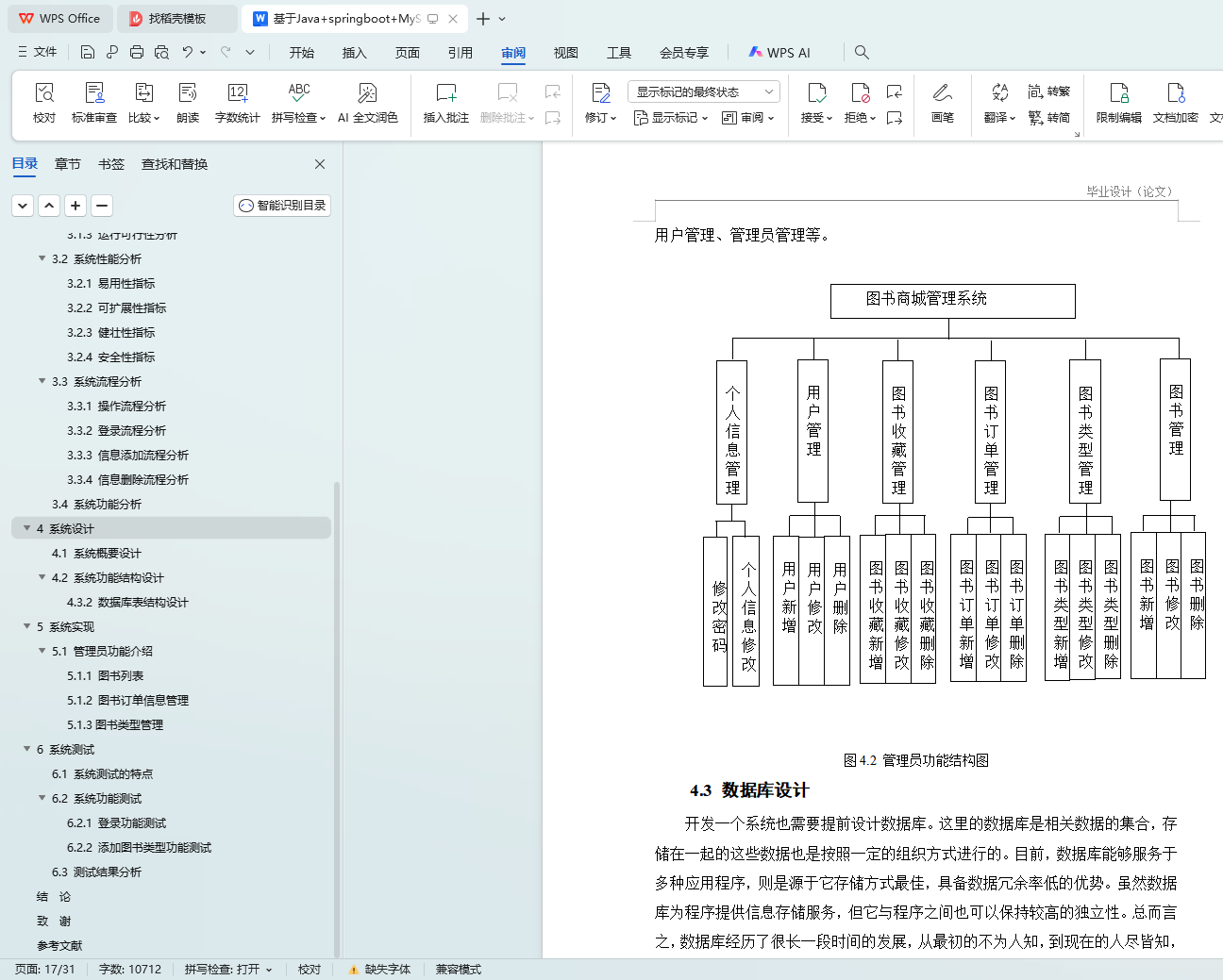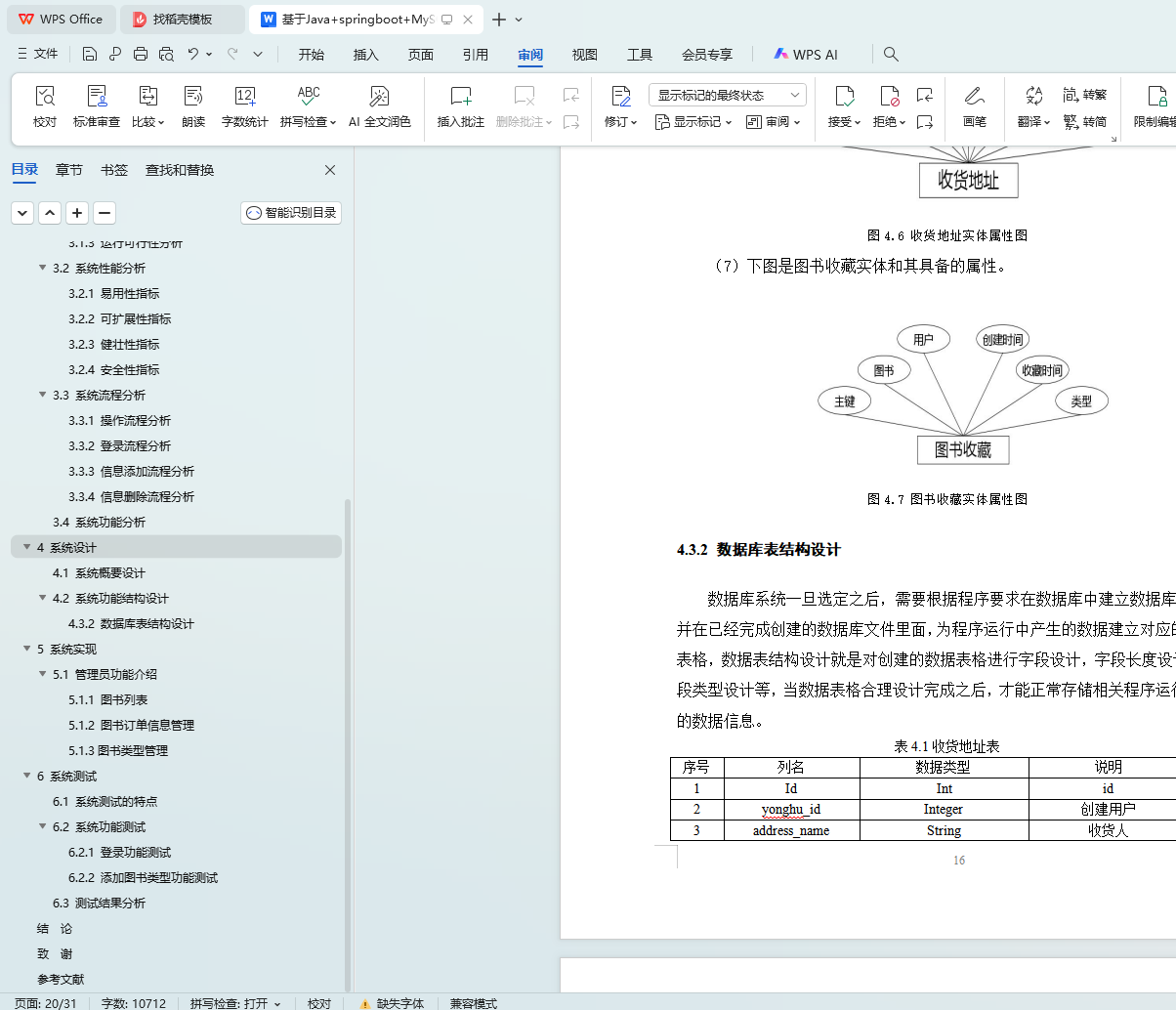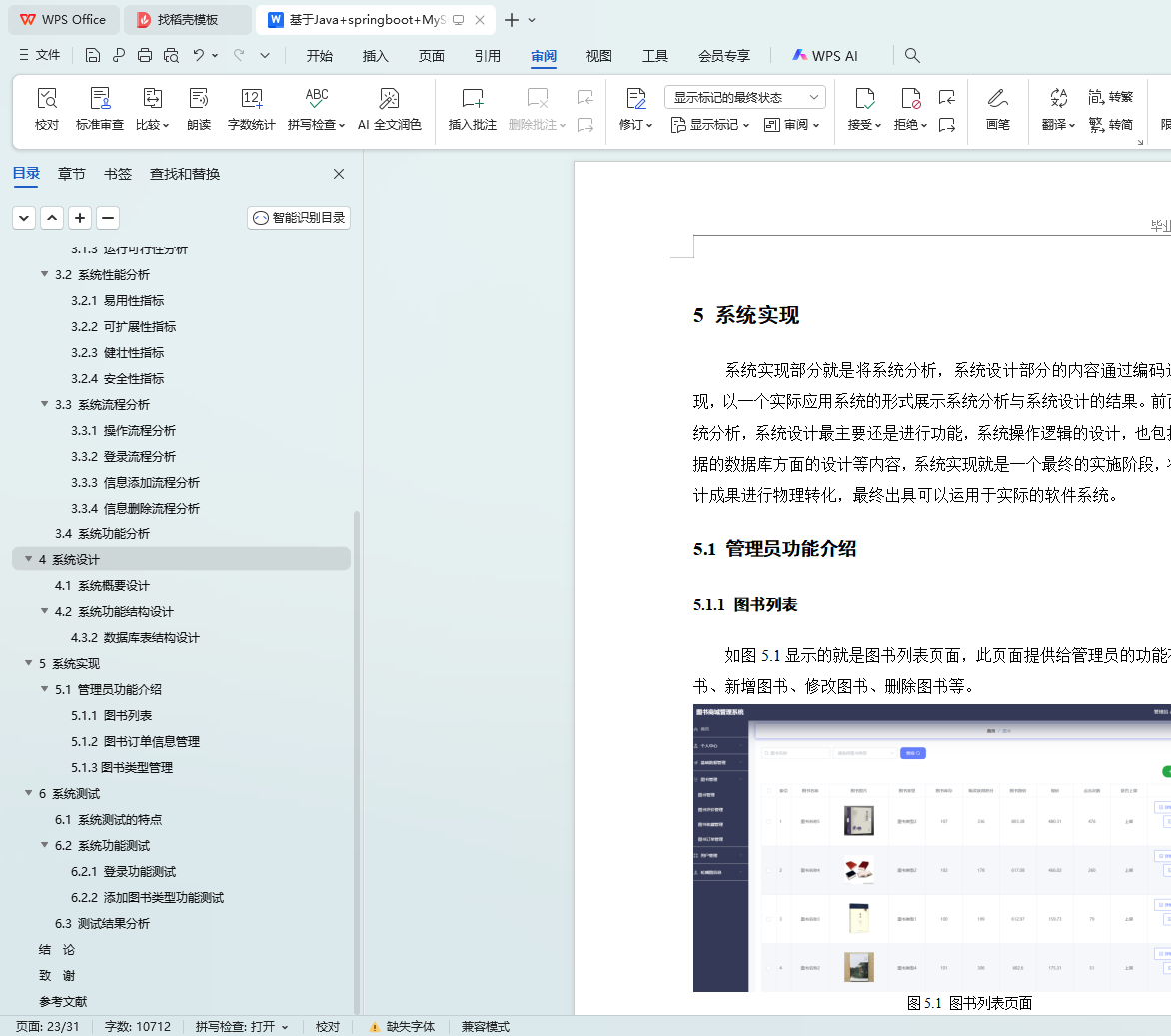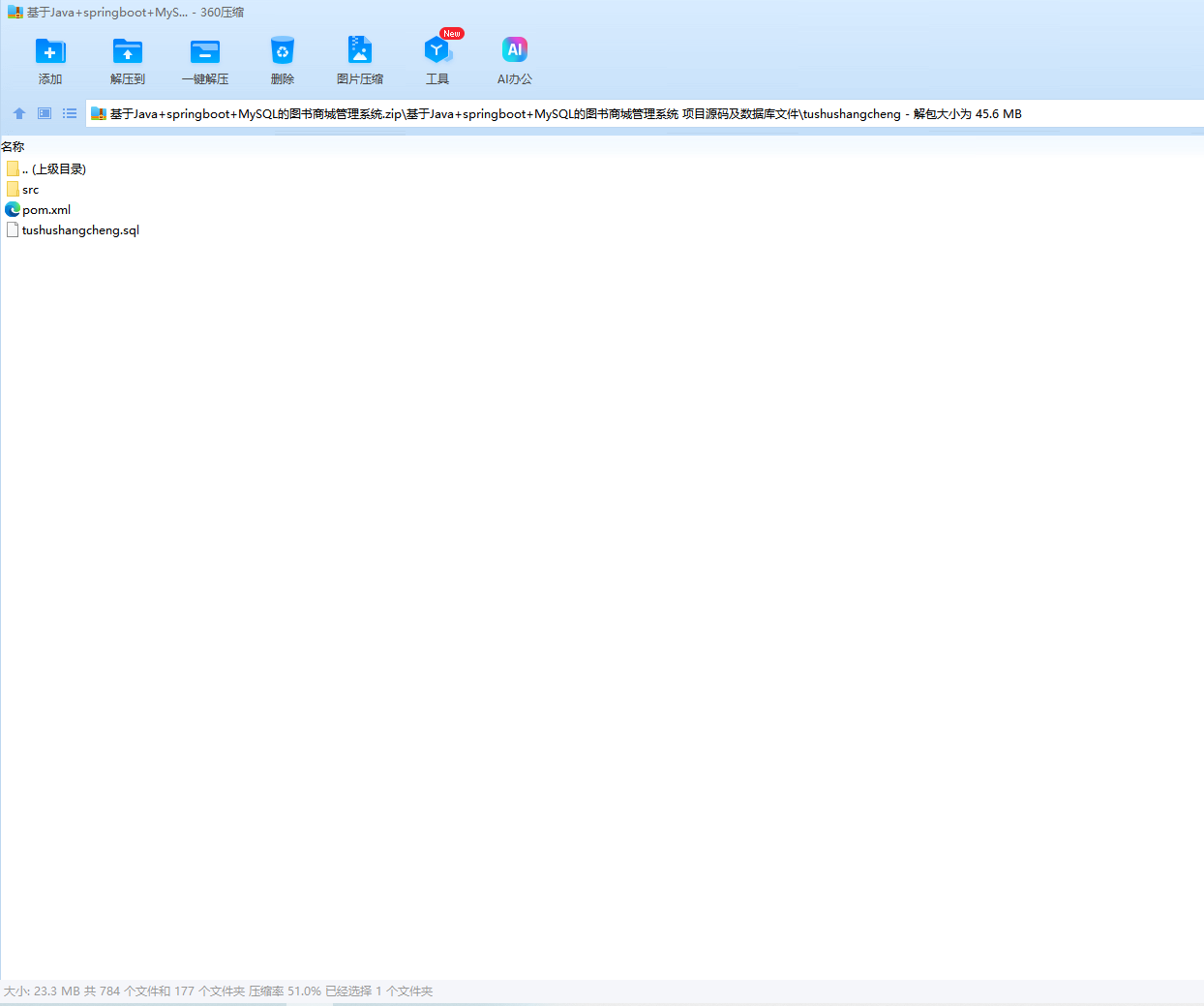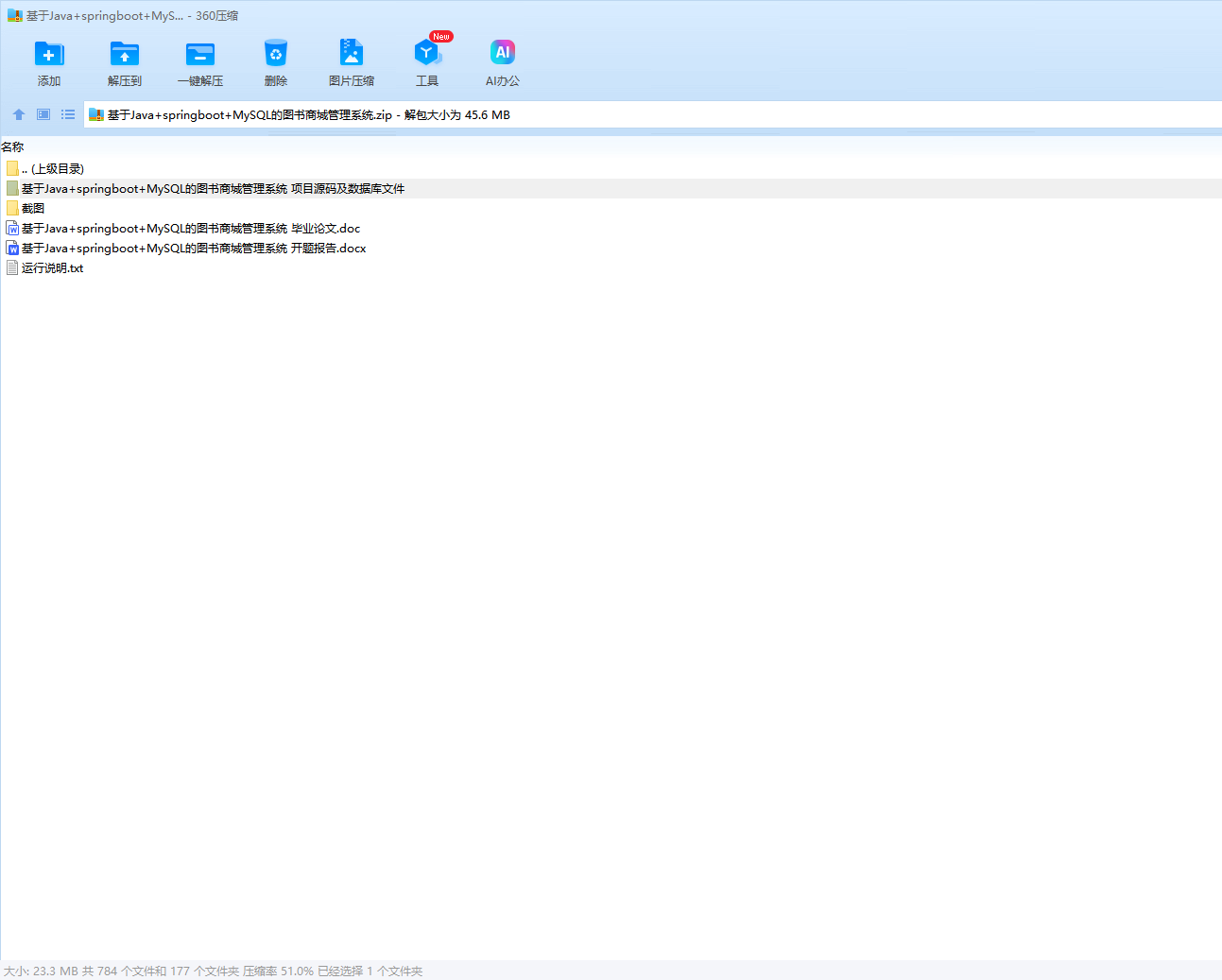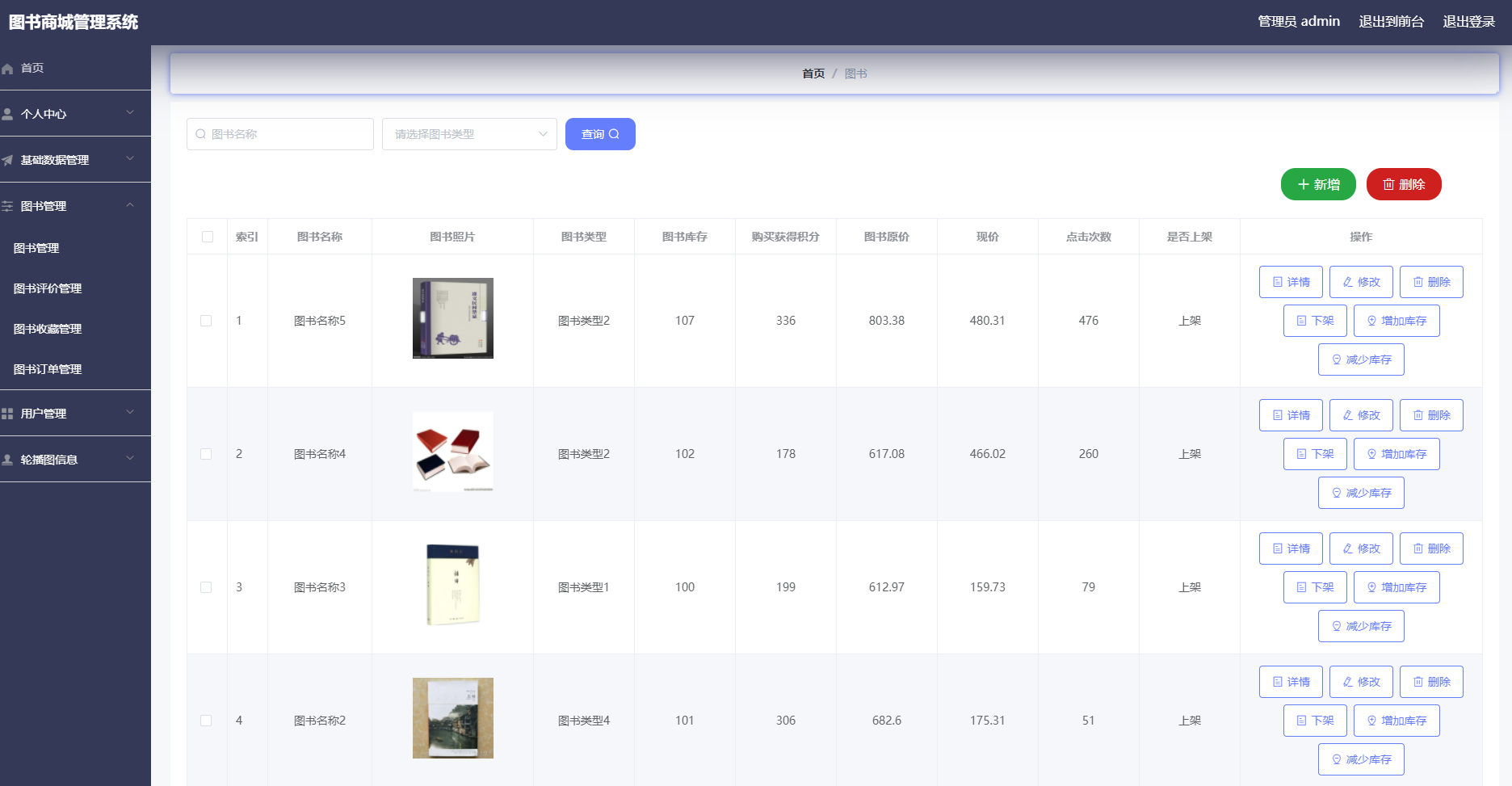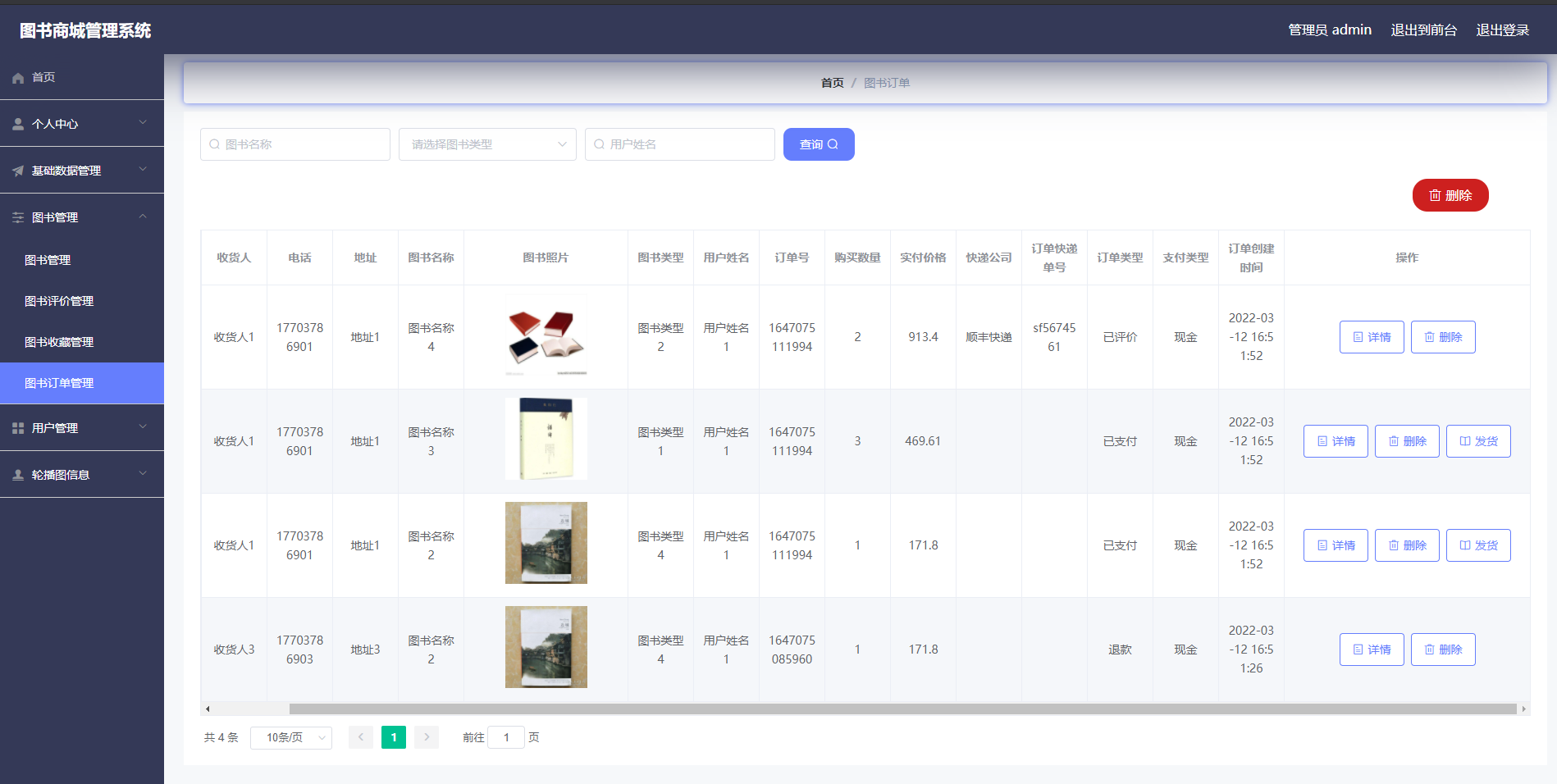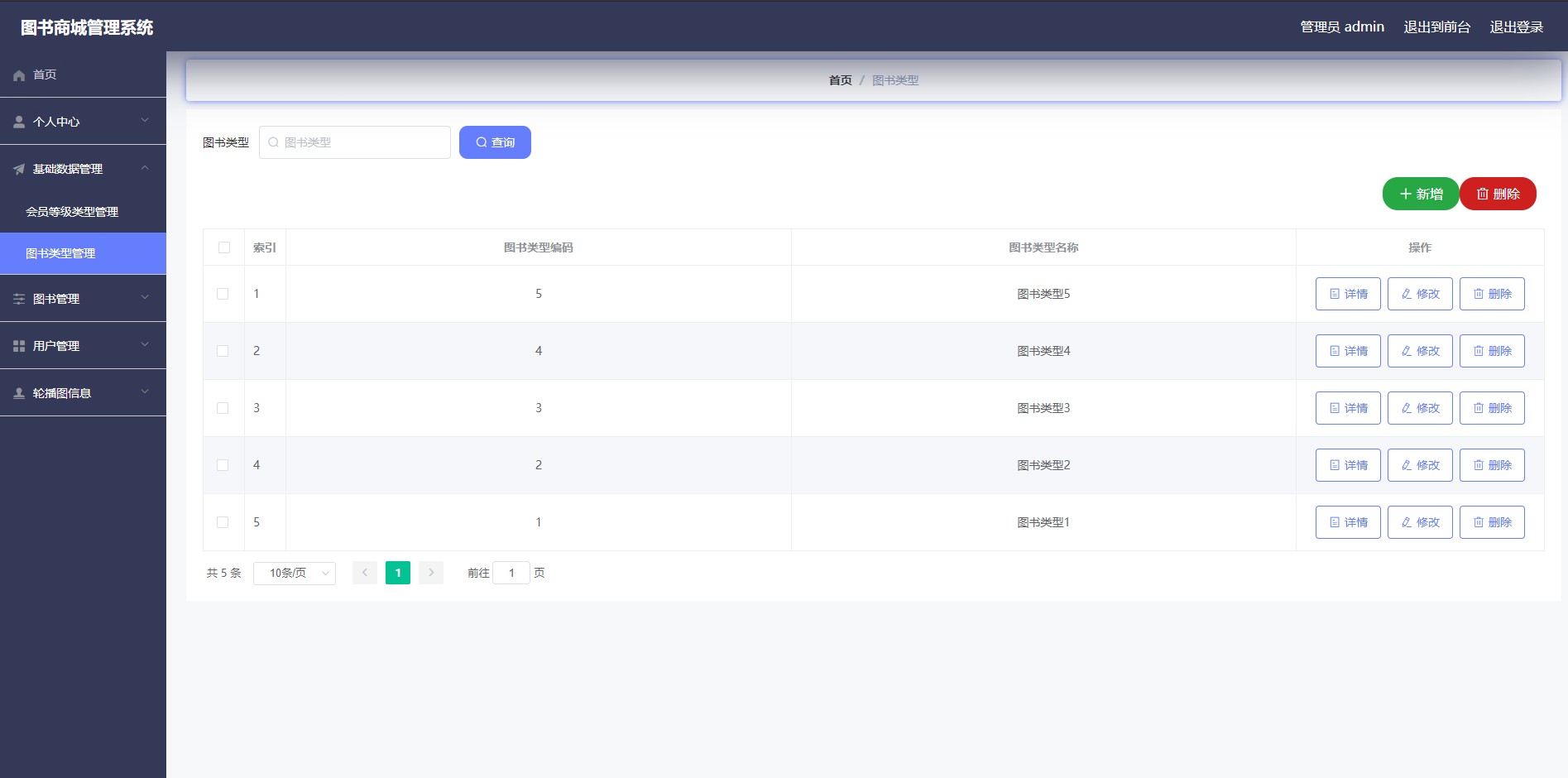摘 要
随着现代经济的迅猛发展和信息化技术的持续升级,传统数据信息管理方式已逐渐转变为软件存储、归纳和集中处理。在此背景下,图书商城管理系统应运而生。该系统旨在助力管理者高效处理海量数据信息,通过软件工具的应用,显著提升事务处理效率,实现事半功倍的管理效果。本系统采用成熟稳定的springboot框架,运用跨平台的Java语言开发,搭配广受欢迎的RDBMS应用软件Mysql数据库进行程序构建。系统功能丰富,支持用户在线选题答题、查看考核分数,同时管理员可便捷管理收货地址、购物车、字典、图书信息、图书收藏、图书评价、图书订单以及用户和管理员账户等。图书商城管理系统的设计界面简洁美观,功能模块布局与同类网站保持一致。在满足基本功能需求的同时,系统还针对数据信息安全问题提供了实用解决方案,实现了数据信息的整体化、规范化和自动化管理,有效提升了管理效率。
关键词:图书商城管理系统;springboot;Mysql数据库;Java;vue
Abstract
With the rapid development of modern economy and the continuous upgrading of information technology, the traditional data and information management mode has been gradually transformed into software storage, induction and centralized processing. In this context, the book mall management system arises at the historic moment. The system aims to help managers to efficiently process massive data and information, through the application of software tools, significantly improve the efficiency of transaction processing, to achieve the management effect of twice the result with half the effort. This system adopts a mature and stable springboot framework, using cross-platform Java language development, and with the popular RDBMS application software Mysql database. The system has rich functions, supporting users to answer questions online and check the assessment scores. At the same time, administrators can easily manage the delivery address, shopping cart, dictionary, book information, book collection, book evaluation, book order and user and administrator accounts, etc. The design interface of the book mall management system is simple and beautiful, and the layout of the functional modules is consistent with similar websites. While meeting the basic functional requirements, the system also provides practical solutions for the data information security problems, realizes the integration, standardization and automatic management of data information, and effectively improves the management efficiency.
Key words: book mall management system; springboot; Mysql database; Java; vue
目 录
目 录
1 绪论
1.1 研究背景
1.2 目的和意义
1.3 论文结构安排
2 相关技术
2.1 springboot框架介绍
2.2 B/S结构介绍
2.3 Mysql数据库介绍
3 系统分析
3.1 系统可行性分析
3.1.1 技术可行性分析
3.1.2 经济可行性分析
3.1.3 运行可行性分析
3.2 系统性能分析
3.2.1 易用性指标
3.2.2 可扩展性指标
3.2.3 健壮性指标
3.2.4 安全性指标
3.3 系统流程分析
3.3.1 操作流程分析
3.3.2 登录流程分析
3.3.3 信息添加流程分析
3.3.4 信息删除流程分析
3.4 系统功能分析
4 系统设计
4.1 系统概要设计
4.2 系统功能结构设计
4.3 数据库设计
4.3.1 数据库E-R图设计
4.3.2 数据库表结构设计
5 系统实现
5.1 管理员功能介绍
5.1.1 图书列表
5.1.2 图书订单信息管理
5.1.3图书类型管理
6 系统测试
6.1 系统测试的特点
6.2 系统功能测试
6.2.1 登录功能测试
6.2.2 添加图书类型功能测试
6.3 测试结果分析
结 论
致 谢
参考文献
